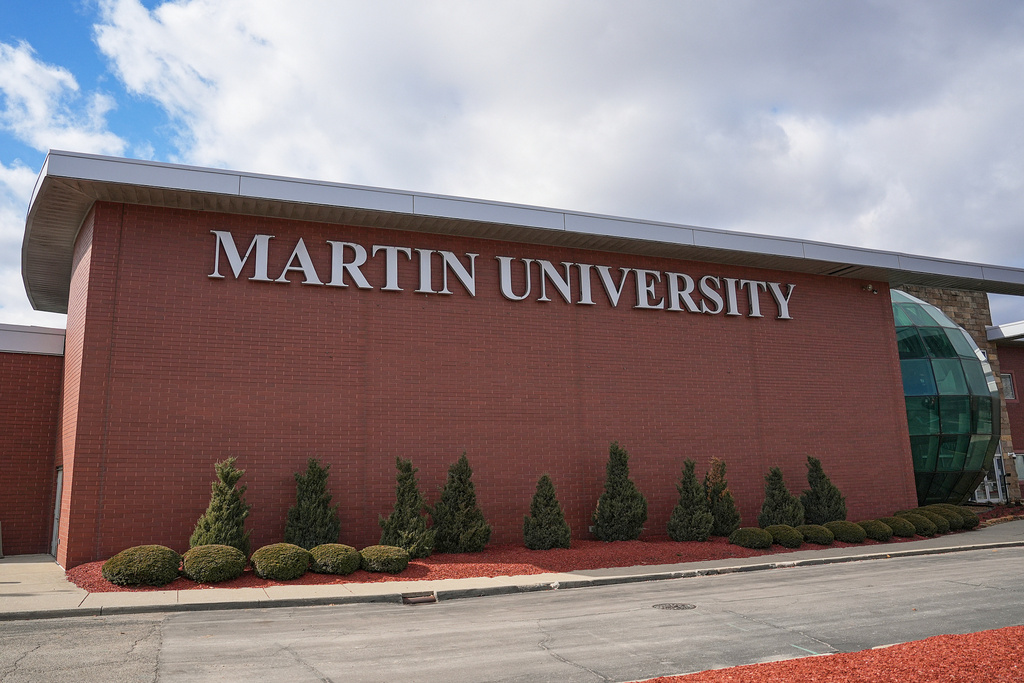Online learning is nothing new for many of the country’s 1,050 community colleges.
“We at Montgomery College have been doing distance learning for years," said Marcus Rosano, director of media and public relations at the Maryland school. "So we've been experts at it before this new world came.”
And leaders say they’re used to being nimble.
“Community colleges have an advantage during this pandemic because we are structured, to a large extent, to be a commuter school," said Oakland Community College chancellor Peter Provenzano, Jr. "We have the ability to adjust, I think, a little bit quicker.”
But schools still face economic uncertainty as they figure out what the fall semester could look like in light of the coronavirus pandemic.
Provenzano says his nearly 30,000 students will continue to rely heavily on online classes in the fall. Some will come to the school’s five campuses for labs or hands-on courses, vital for trades these institutions specialize in, including the culinary industry.
“We're beginning to create an environment where students are coming in learning to cook, essentially, during a pandemic, no different than if they were at a restaurant," he said. "They're using the proper PPE, they're doing social distancing. They're even delivering food to the cars instead of a traditional dining room experience.”
Despite, or perhaps because of, the reliance on online courses, OCC's current summer session saw a 6% bump in enrollment compared to the same time in 2019.
That trend could continue to the fall, as unemployed adults potentially seek more job training, graduating high school students look for remote learning at a reduced price tag, or current high schoolers take part in dual enrollment programs.
Enrollment at community colleges nationwide saw a brief spike at the beginning of the Great Recession in 2008. But costs saw an uptick, too.
"Tuition and fees, like the cost, was passed along to students," said John Fink, senior research associate at the Community College Research Center. "We don't know if that's really reasonable this go-round, because people are really struggling. So it just raises a lot of questions around just funding, you know, will there be adequate funding? I mean, there hasn't ever really been adequate funding, but this is even more of a challenging circumstance.”
Proposed funding cuts to community colleges and other public institutions across the country are already being discussed as leaders consider potentially costly changes to help curb the spread of the coronavirus.
Like many traditional four-year institutions, some campuses are considering adjusting schedules, providing face masks, and conducting contact tracing when students eventually return to campus, which could be challenging.
“Somebody may come on for one class, you know, or they may have five classes spread out," said Adam Reid, interim director of public safety at Montgomery College. "So it's a lot more to try to keep track of, and it's a lot more to be mindful of, you know, with having a huge footprint and a huge county, as opposed to a small campus in a small area.”
And educators will need to rely more heavily on technology, too. Some say a digital divide has already been exposed for people attending community colleges, where the average age is 28, 64% are enrolled part time, and nearly a third are first-generation college students, according to the American Association of Community Colleges.
“They don’t have laptops, WiFi, a quiet place to study," Bunker Hill Community College President Pam Eddinger said at a recent panel discussion in Boston. "They’re taking care of kids at home, they’re being teachers to those children, and all the while suffering all of the same basic needs, the lack of enough food and nutrition, housing, all of those things have come to a point.”










